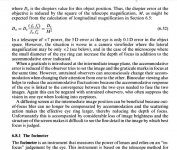The consensus seems to be that Leica gets soft away from center. However, although my BN 8x32 is not "sharp to edges" (not that any glass is), it actually performs quite well off-axis. Is there a significant variance from model to model concerning such? I am particularly interested in the relative "sweet spot" sizes of the Trinovid BN 8x32 and the Ultravid BR 7x42.
Thanks, APS
Thanks, APS






